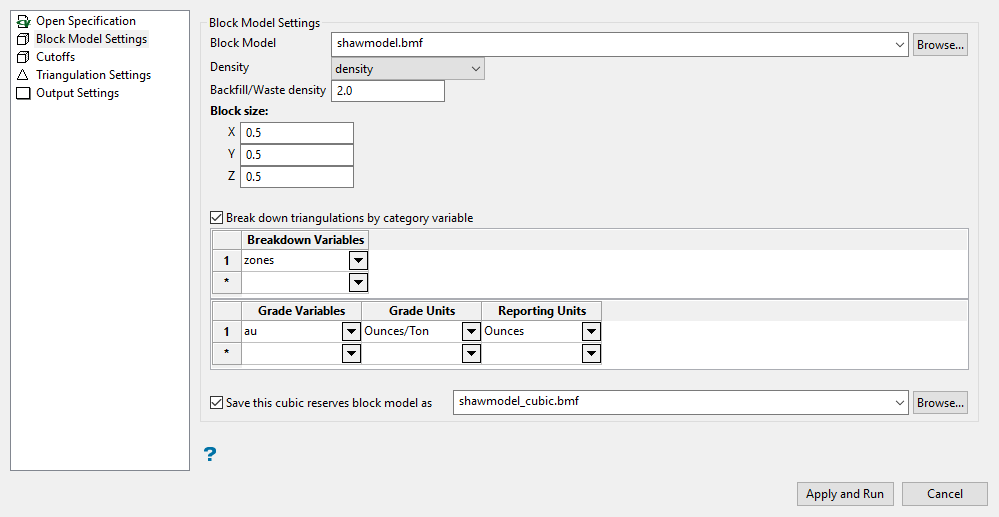Block Model Settings
Use the Block Model Settings option to choose block model variables to use in the cubic reserving process.

Block Model Settings
Block Model
Select the appropriate block model to be used that contains grade information. Click Browse to select a file from another location.
The drop-down list contains all block models found within the current working directory. Click Browse to select a file from another location.
Density
Select the density variable from the block model that represents the density of the in situ material. The drop-down list contains all variables found with the selected block model.
Backfill/Waste density
Enter the default density value used to represent backfill material.
Block size
Enter the minimum blocking cell sizes in the X, Y, and Z directions. Note that small sub-blocking sizes will result in a longer calculation time when associated with large triangulation volumes.
Note: The block size specified for cubic reserving must be a value that is divisible by the block size defined in X, Y, and Z directions.
Grade Variables
Select the grade variables for which to report. The drop-down list contains all grade variables found in the nominated block model.
Grade Units
Select the grade variable units to use for calculating grade in the reserving area. The drop-down list contains all units available, including oz/ton, grams/tonne, % and PPM.
Reporting Units
Select the reporting grade units to use for reserving. The drop-down list contains all units available, including grams, kg, tonnes, oz, lbs and tons.
Save this cubic reserves block model as
Select this option if you wish to save the cubic version of this model as a separate model. Select the name of the model from the drop-down list, browse for it if it does not exist in the current working directory by clicking the Browse button, or type a new name for your model in the space provided.
Related topics

